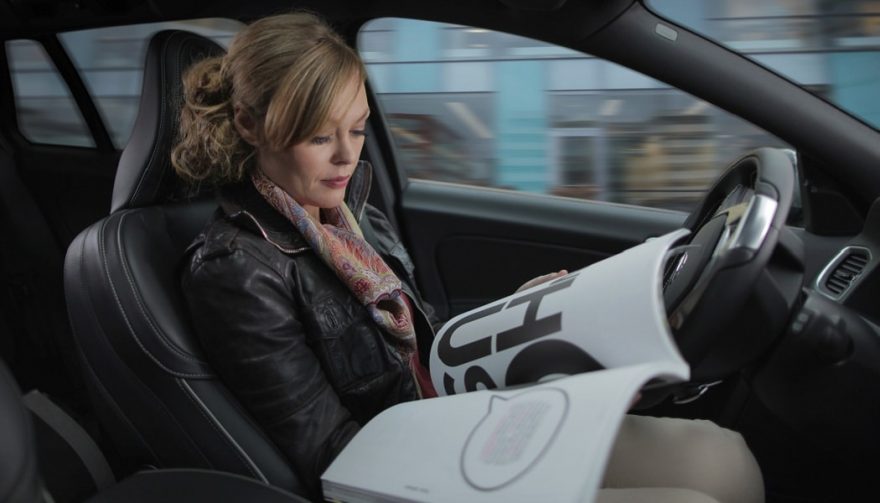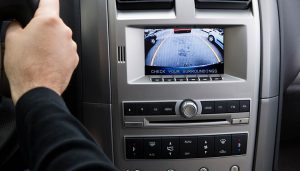
There are six different levels of autonomous car driving.
Autonomous Car Levels Can Be Misleading
When someone starts talking about robot vehicles – autonomous cars – what kinds of images enter your mind? Transformers? Knight Rider? Herbie?
Plenty of people in the automotive industry have been talking big about robot cars lately. Supposedly we’re right around the corner from everyone never driving again.
These cars will let you answer emails on your way to work. They’ll drive around while you’re sitting at work, making extra money for you as an Uber vehicle.
These cars will also pick up Timmy from soccer practice, because you’re still at work. Then they’ll handle all the belligerent drivers on the road, while you sleep on your way home.
It all sounds amazing, and we’re only a few years away from this tech, right?
Wrong.
Misunderstanding and Misrepresentation
Plenty of consumers feel nervous about autonomous cars. After all, aren’t they just one step away from a dystopian future where robots rule over humans?
Those reservations obviously are ridiculous, and they miss the point. But that’s what’s going on right now: plenty of misunderstanding, and a fair dose of misrepresentation.
Automakers like to talk about the future. They plan for the future. And when they do that, they sometimes use terms people misinterpret, like self-driving, autonomous and robotic.
Some in the automotive industry get really excited about cutting-edge tech. Maybe they get so caught up in their emotions they start misrepresenting progress and where we’ll be at certain points.
Levels of Automation
To really understand what’s going on with autonomous cars, you need to have some understanding of driving automation levels. SAE International has a standard called J3016, which assigns one of six levels of automation to a vehicle (0-5).
A zero means there’s absolutely no automation, and Level 5 means you could take a nap and let the car handle everything. Full automation.
One of the last acts of the Obama Administration was to designate eight zones in the U.S. for self-driving cars. At best, the vehicles that drive around those areas will use Level 4 tech, but most will likely be Level 3, at least for now.
Plenty of mainstream news organizations made it sound like Level 5 cars would be used in those areas.
Despite what you may have heard, nobody has developed Level 5 automation, period. Some people may talk big about reaching that goal soon, but nobody has.
Toyota has a whole department dedicated to creating new vehicle technologies, called the Toyota Research Institute (TRI). The company is pouring $1 billion into researching artificial intelligence and robotics.
During CES this year, Dr. Gill Pratt (who helped launched TRI) announced nobody in the industry is close to reaching Level 5.
When Things Get Rough
The fact is most of the driving we do is easy. That’s why people get distracted, because they become bored with going in a straight line, at the same speed, with nothing really happening. It’s so easy, some current cars like Teslas can handle it for us.
But when driving becomes tough, robot cars can’t cut the mustard. For example, if snow or damage obstructs the lines on a road, robot cars freeze, because they don’t know what to do. Humans will make up lanes, if necessary, and keep going.
SAE even defines Level 5 as “the full-time performance by an automated driving system of all aspects of the dynamic driving task under all roadway and environmental conditions that can be managed by a human driver.”
So, if humans can figure out a road that’s covered with a thin layer of snow, Level 5 cars can too.
Level 5 autonomous cars can also navigate crazy traffic in congested cities, not just cruise down the highway. There’s a reason why San Francisco told Uber to pack up the autonomous cars the company was going to run on city streets.
Other Restrictions
As Pratt pointed out in an interview with IEEE Spectrum after his CES presentation, some automakers aren’t being too honest about their fully autonomous cars. The reality is those vehicles might drive around in a section of city that’s been well-documented by the automaker, without other cars in its lane, and no inclement weather.
Part of the problem is people don’t get the difference between Level 3 and Level 4 autonomous driving. Sometimes they even think it’s the same as Level 5.
With Level 3, drivers always need to be at the ready to take over for the system, like with Tesla’s Autopilot. You can only use the tech in certain circumstances, like on roads with clearly marked medians and lane lines, without intersections.
As for Level 4, it can handle a specific driving mode, like cruising on the freeway, without needing human intervention at all. Of course, a human could intervene, but with this tech, it wouldn’t be necessary.





